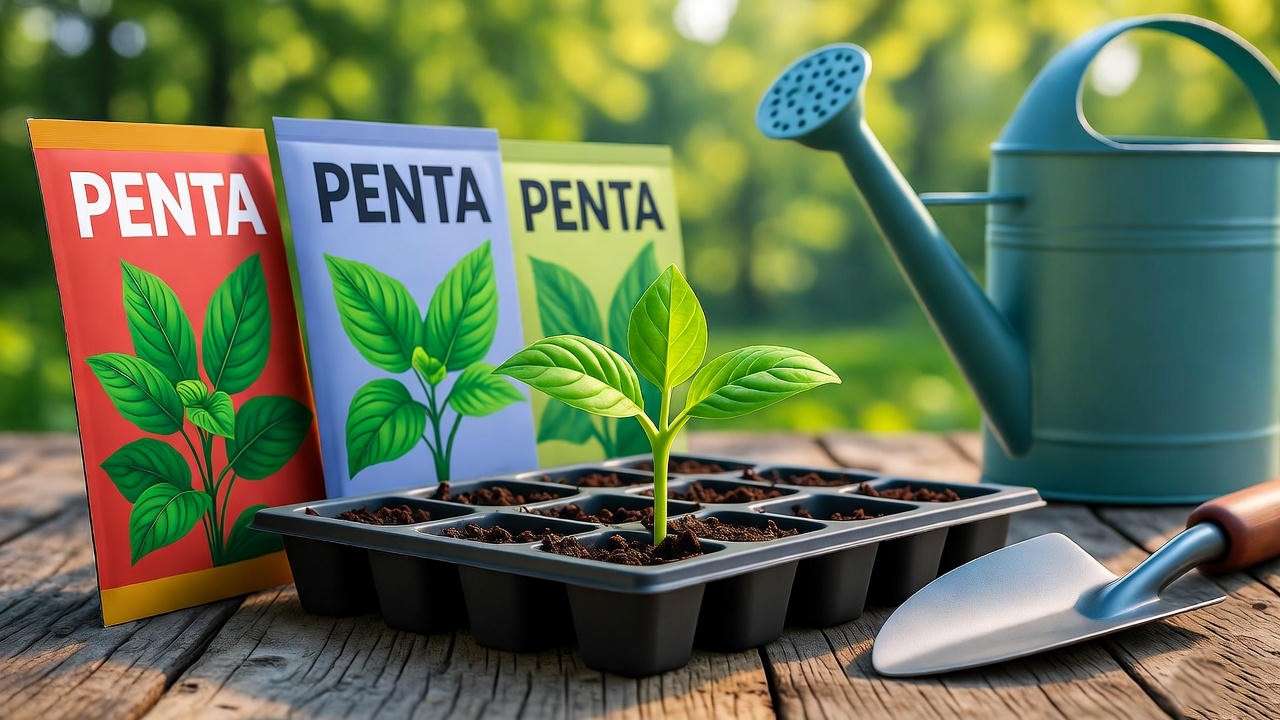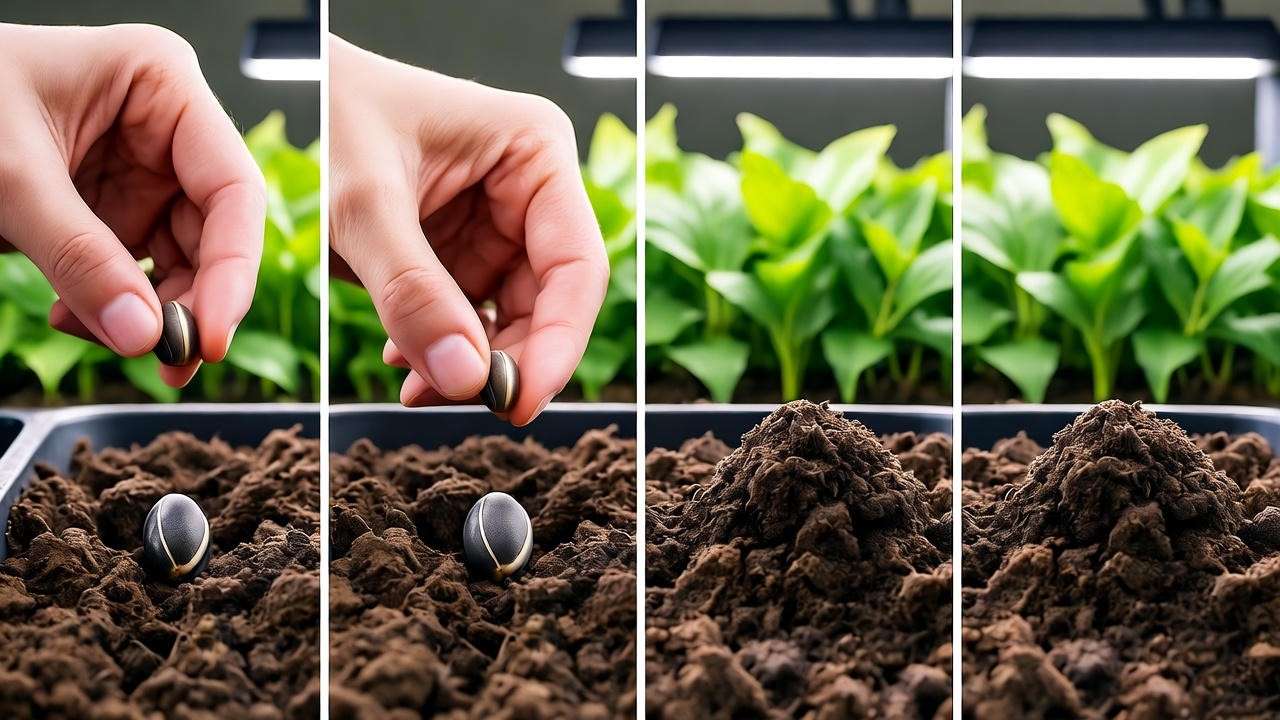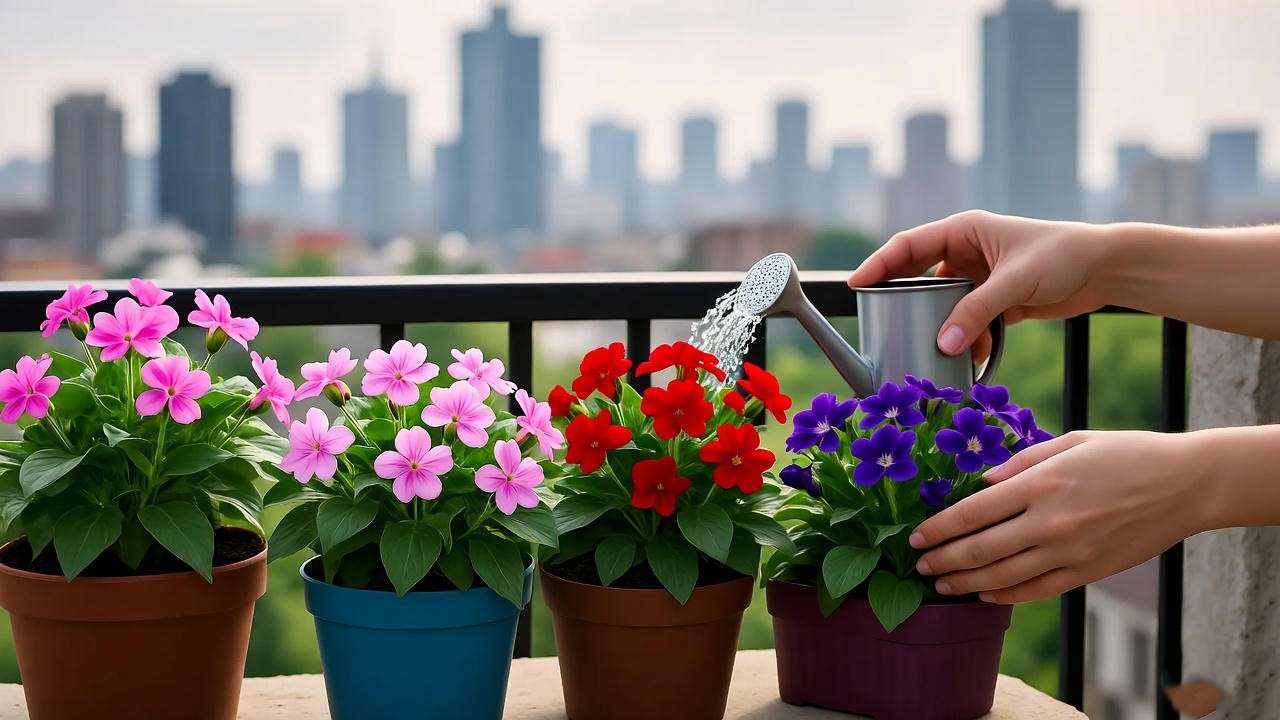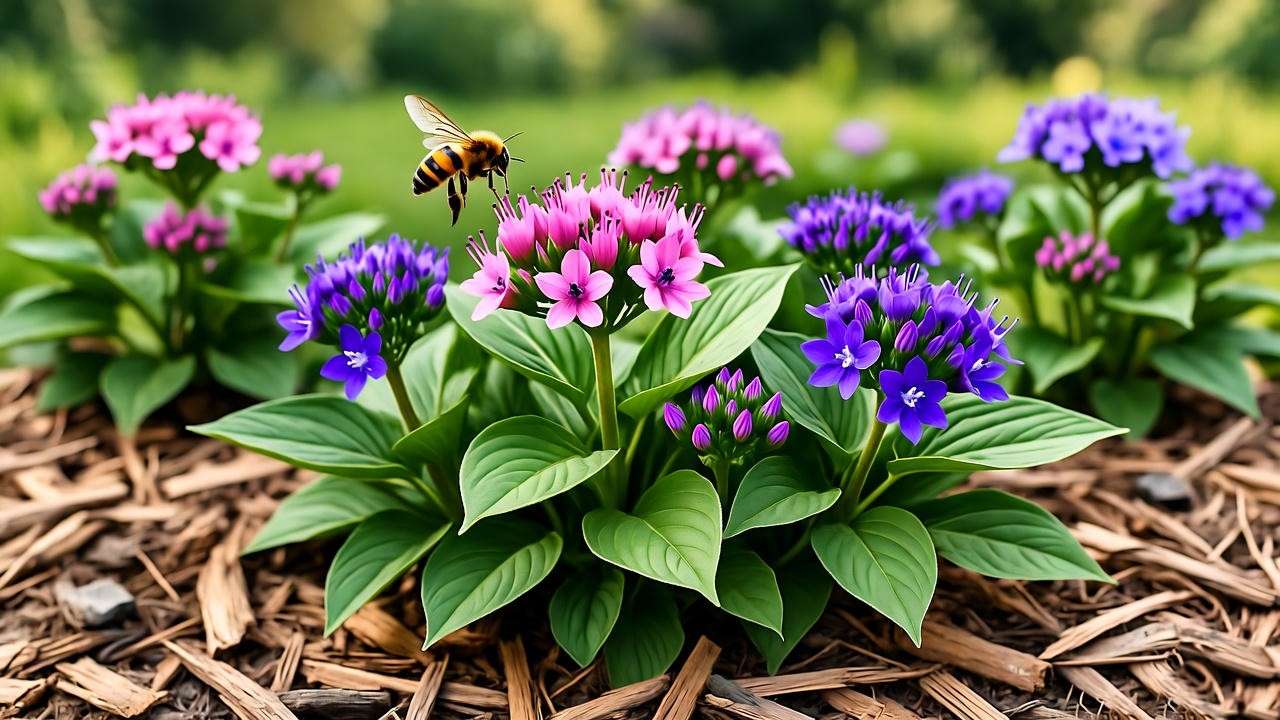Imagine your garden bursting with star-shaped blooms in vivid shades of pink, red, and lavender, drawing butterflies and hummingbirds like a living canvas 🦋🐦. Penta plant seeds offer gardeners an affordable, rewarding way to create this vibrant display, but growing them successfully can feel daunting without the right guidance. Whether you’re a novice or seasoned gardener, mastering the art of growing penta plant seeds unlocks a world of low-maintenance beauty and pollinator-friendly charm. As a horticulturist with over a decade of experience, I’ve cultivated pentas in diverse climates and am thrilled to share this comprehensive guide to help you achieve stunning blooms. From sowing seeds to nurturing thriving plants, this article addresses every step to solve your gardening challenges and transform your space into a floral haven 🌿.
What Are Penta Plant Seeds? 🌟
Understanding Penta Plants
Penta plants, scientifically known as Pentas lanceolata, are tropical perennials native to East Africa, beloved for their clusters of star-shaped flowers. These blooms, available in vibrant hues like pink, red, white, and lavender, make pentas a favorite for garden beds, borders, and containers. Often called “Egyptian Starflowers,” they thrive in warm climates and bloom profusely from spring to fall, attracting pollinators like bees, butterflies, and hummingbirds 🐝. Their lush green foliage and compact growth (12-24 inches tall) make them versatile for various garden designs.
Why Choose Penta Plant Seeds Over Cuttings?
Starting with penta plant seeds offers distinct advantages over cuttings. Seeds are cost-effective, allowing you to grow multiple plants for the price of a single nursery specimen. They also provide genetic diversity, ensuring unique traits in your plants. Plus, the process of nurturing seeds into blooming plants is deeply rewarding, giving you full control over their growth. While cuttings are faster, seeds let you experiment with varieties and propagate future generations, making them ideal for budget-conscious gardeners seeking long-term value.
Benefits of Growing Penta Plants from Seeds 🌱
Vibrant Aesthetics for Your Garden
Penta plants transform gardens with their eye-catching flower clusters, perfect for borders, mixed beds, or standalone containers. Their bright colors create a focal point, while their nectar-rich blooms attract pollinators, enhancing your garden’s ecosystem 🦋. Whether you’re designing a tropical oasis or a cottage-style garden, pentas add a pop of color that lasts for months.
Low Maintenance and Long Blooming
Pentas are a gardener’s dream for their resilience. They tolerate heat, drought, and poor soil, making them ideal for busy gardeners or those in challenging climates. In warm regions, they bloom from spring through fall, and in tropical zones, they can flower year-round. This extended blooming period ensures your garden stays vibrant with minimal effort.
Budget-Friendly Gardening
Growing penta plant seeds is a wallet-friendly alternative to buying mature plants. A single packet of seeds can yield dozens of plants, and with proper care, you can harvest seeds from mature pentas for future planting. This sustainability makes pentas a smart choice for eco-conscious gardeners looking to maximize value.
Step-by-Step Guide to Growing Penta Plant Seeds 🌼
Choosing the Right Penta Plant Seeds
Selecting high-quality seeds is the foundation of success. Opt for reputable suppliers like Burpee or Park Seed, which offer varieties such as ‘Starla,’ ‘Butterfly,’ or ‘Graffiti,’ each with unique colors and growth habits. Hybrid seeds often provide uniform growth, while heirloom varieties offer diversity. Check for high germination rates (typically 70-80%) and ensure seeds are fresh, as viability decreases with age. Expert Tip: Read reviews or consult local gardening forums to find trusted seed sources.

Preparing for Planting
Timing is critical when planting penta plant seeds. In most regions, start seeds indoors 8-10 weeks before the last frost (typically early spring). In tropical climates, you can sow directly outdoors year-round. Gather supplies: seed trays, a well-draining potting mix (like a peat-perlite blend), and grow lights for indoor starts. Pentas prefer slightly acidic soil (pH 6.0-6.5), so test your mix and amend if needed with sulfur or organic compost.
Sowing Penta Plant Seeds
To sow, fill trays with moist potting mix and sprinkle seeds evenly, pressing them lightly into the surface (1/8 inch deep). Avoid burying them too deeply, as pentas need light to germinate. Space seeds about 1 inch apart to prevent overcrowding. Cover trays with a clear lid or plastic wrap to retain humidity, and place them in a warm spot (70-75°F). Mist the soil to keep it consistently moist but not waterlogged 💧. Expert Tip: Use a spray bottle to avoid disturbing delicate seeds.

Germination and Early Care
Penta plant seeds typically germinate in 7-14 days under optimal conditions. Maintain a temperature of 70-75°F and provide bright, indirect light. If starting indoors, use grow lights (12-16 hours daily) to prevent leggy seedlings. Watch for damping-off, a fungal issue caused by overwatering or poor ventilation. To prevent it, ensure good airflow and avoid soggy soil. Once seedlings emerge, remove covers and thin them to the strongest plants. Expert Insight: A heat mat can boost germination in cooler climates.
Transplanting Seedlings
After 4-6 weeks, when seedlings develop 2-3 true leaves, they’re ready for transplanting. Harden them off by gradually exposing them to outdoor conditions over 7-10 days (start with 1-2 hours daily). Transplant into pots or garden beds with well-draining soil, spacing plants 12-18 inches apart to allow for growth. Water thoroughly after transplanting and mulch lightly to retain moisture. Ensure the new location gets full sun for optimal blooming.
Caring for Penta Plants After Planting 🌿
Watering and Feeding
Water young pentas regularly to keep soil moist but not soggy. Once established, they’re drought-tolerant and need watering only when the top inch of soil feels dry. Apply a balanced, water-soluble fertilizer (10-10-10) every 4-6 weeks during the growing season to promote vigorous blooms. Avoid over-fertilizing, which can lead to lush foliage but fewer flowers. Expert Tip: Use a diluted fertilizer solution for young plants to prevent nutrient burn.
Sunlight and Temperature Needs
Pentas thrive in full sun, requiring at least 6 hours of direct sunlight daily for vibrant blooms. They tolerate partial shade but may produce fewer flowers. Ideal temperatures range from 60-85°F; protect plants from frost by covering them or bringing potted pentas indoors in cooler climates ❄️. In hot regions, provide afternoon shade to prevent leaf scorch during intense summer heat.
Pruning and Deadheading
Deadheading spent blooms encourages continuous flowering. Pinch off faded flower clusters with clean shears or your fingers, cutting just above a leaf node. Prune leggy stems in midsummer to maintain a compact shape and stimulate new growth. Regular pruning prevents pentas from becoming woody and extends their lifespan. Expert Insight: Save pruned stems for composting to enrich your garden soil.
Pest and Disease Management
Pentas are relatively pest-resistant but may attract aphids or spider mites. Control infestations with neem oil or insecticidal soap, applied early in the morning for best results. Prevent fungal diseases like powdery mildew by ensuring proper spacing and avoiding overhead watering. Inspect plants regularly for signs of distress, such as yellowing leaves or webbing, and act promptly to maintain plant health.
Troubleshooting Common Issues with Penta Plant Seeds 🚫
Poor Germination Rates
If seeds fail to sprout, check for old or low-quality seeds, improper temperatures, or excessive moisture. Test seed viability by soaking a few in water; viable seeds sink, while non-viable ones float. Ensure a consistent 70-75°F environment and use fresh, high-quality seeds. If overwatering is an issue, adjust to light misting and improve drainage.
Weak or Leggy Seedlings
Leggy seedlings result from insufficient light or overcrowding. Provide 12-16 hours of bright light using grow lights or a sunny windowsill. Thin seedlings to 2-3 inches apart to reduce competition. If seedlings are already leggy, pinch back the tips to encourage bushier growth and transplant them deeper to stabilize stems.
Failure to Bloom
Lack of blooms often stems from inadequate sunlight, nutrient imbalances, or improper pruning. Relocate plants to a sunnier spot (6+ hours of direct sun) and ensure regular fertilization with a balanced formula. Deadhead consistently to stimulate flower production. If plants are still young, be patient—pentas may take 10-12 weeks from sowing to bloom.
Creative Ways to Use Penta Plants in Your Garden 🎨
Designing with Pentas
Penta plants are incredibly versatile, making them a designer’s dream for vibrant garden layouts. Use them as border plants to create a colorful edge along pathways or fences, or plant them in mixed beds alongside complementary flowers like zinnias, salvias, or marigolds for a pollinator-friendly display 🦋. Their compact size makes them ideal for container gardens, where they can spill over the edges of pots or serve as a central focal point. For a dramatic effect, group pentas in clusters of varying colors to create a living bouquet. Example: Pair red ‘Starla’ pentas with white alyssum and blue salvia for a patriotic-themed garden bed that blooms all summer.

Penta Plants for Small Spaces
Urban gardeners or those with limited space can still enjoy pentas’ beauty. Grow them in pots on balconies, patios, or windowsills, choosing dwarf varieties like ‘Graffiti’ for smaller containers. Vertical gardening is another option—use hanging baskets or tiered plant stands to maximize space. Combine pentas with trailing plants like sweet potato vine or petunias for a lush, cascading effect. Expert Tip: Ensure pots have drainage holes and use a lightweight, well-draining potting mix to prevent root rot in confined spaces.

Expert Tips for Long-Term Success with Penta Plant Seeds 🌟
To elevate your penta-growing game, consider these expert strategies:
- Propagate Your Own Seeds: Once your pentas mature, collect seeds from dried flower heads to grow new plants. Store them in a cool, dry place in airtight containers to maintain viability for up to a year.
- Rotate Planting Locations: Prevent soil-borne diseases by rotating where you plant pentas each year. This practice also maintains soil fertility and reduces pest buildup.
- Use Mulch Wisely: Apply a 1-2 inch layer of organic mulch (like bark or compost) around plants to retain moisture, regulate soil temperature, and suppress weeds, especially in hot climates.
- Join Gardening Communities: Connect with local or online gardening groups (e.g., Reddit’s r/gardening or local extension services) to share tips and get region-specific advice on penta care. Expert Insight: Master gardeners often recommend experimenting with different penta varieties to find those best suited to your climate and aesthetic preferences.

Environmental and Ecological Benefits of Penta Plants 🌍
Penta plants are more than just pretty blooms—they’re ecological superstars. Their nectar-rich flowers attract bees, butterflies, and hummingbirds, supporting pollinator populations critical to food crops and ecosystems 🐝. By planting pentas, you contribute to biodiversity and create a haven for wildlife. Their drought tolerance and minimal need for chemical fertilizers or pesticides make them a sustainable choice for eco-friendly gardens. Pentas also fit seamlessly into xeriscaping or low-water landscapes, reducing your environmental footprint. Example: Incorporate pentas into a rain garden alongside native plants to enhance both beauty and ecological function.
Frequently Asked Questions (FAQs) ❓
Can Penta Plant Seeds Be Grown Indoors Year-Round?
Yes, penta plant seeds can thrive indoors with proper care. Use grow lights to provide 12-16 hours of bright light daily, mimicking outdoor conditions. Maintain a warm environment (70-75°F) and use a well-draining potting mix. Indoor pentas may bloom less prolifically than outdoor plants but can still add vibrant color to your home. Expert Tip: Rotate pots weekly to ensure even light exposure.
How Long Do Penta Plants Take to Bloom from Seed?
Under optimal conditions, pentas typically bloom 10-12 weeks after sowing. Factors like sunlight, temperature, and soil quality can affect this timeline. To speed up blooming, start seeds indoors early and provide consistent care during the seedling stage.
Are Penta Plants Deer-Resistant?
Pentas are generally deer-resistant due to their slightly fuzzy foliage and strong scent, which deter grazing. However, in areas with heavy deer pressure, no plant is entirely safe. Use physical barriers like netting or plant pentas alongside other deer-resistant species (e.g., lavender or rosemary) for added protection.
What’s the Best Way to Store Penta Plant Seeds?
Store seeds in a cool, dry place (40-50°F) in airtight containers or resealable bags to maintain viability. Add a silica gel packet to absorb moisture and prevent mold. Properly stored seeds can remain viable for up to 12-18 months. Expert Tip: Label containers with the variety and collection date for easy reference.
Conclusion
Growing penta plant seeds is a rewarding journey that transforms your garden into a vibrant, pollinator-friendly paradise 🌸. With their stunning blooms, low-maintenance care, and ecological benefits, pentas are a must-have for any gardener. This guide has equipped you with everything you need—from selecting high-quality seeds to troubleshooting common issues—to achieve thriving plants. As a horticulturist passionate about sustainable gardening, I encourage you to start sowing today and watch your garden come alive. Share your penta-growing successes in the comments or on social media with #PentaBloomChallenge, and let’s inspire others to cultivate beauty! 🌿













